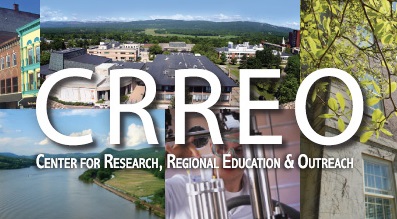Latest CRREO discussion brief focuses on property taxation
 The Center for Research, Regional Education and Outreach (CRREO) at SUNY New Paltz examines the issues and options regarding property taxation in New York State in its latest discussion brief released this week.
The Center for Research, Regional Education and Outreach (CRREO) at SUNY New Paltz examines the issues and options regarding property taxation in New York State in its latest discussion brief released this week.
According to the report, titled “Classification of Property Taxation in New York State: Issues and Options,” the creation of four classes of properties in New York City and Nassau County, and the taxation properties within each class at different rates, was an approach adopted by the state legislature over a third of a century ago to avoid potential major increases in homeowners’ tax burdens that might have resulted from a state high court decision.
The same 1981 law that created the mandatory classification scheme for property taxation in New York City and Nassau County provided for the voluntary use of a two property-class system – the categories are homestead and non-homestead properties − by upstate municipalities and school districts. Over time, this option was adopted by 13 cities, 17 towns, 18 villages and 38 school districts.
Current legal challenges to New York City’s differential property tax rates, if successful, will have major implications for homestead/non-homestead municipalities in upstate New York. The report explores those implications.
The authors, Gerald Benjamin, CRREO director and associate vice president for regional engagement at SUNY New Paltz , and Tom Cetrino, CRREO advisory board member and research consultant, note that “it is clear that localities that adopted the homestead/non-homestead system have experienced two sets of unanticipated, undesired effects of this choice: unpredictable, uncapped shifts in the tax burden between homestead and non-homestead properties; and an effective irreversibility in policy because of the potential effect of change on school districts and the resulting ‘tax shock’ for city, town or village homeowners.”
As a result, the brief offers two policy options for upstate homestead/non-homestead municipalities looking to opt out:
- Enact Reform Legislation Proposed by the Office of Real Property Tax Services in 2009: In 2009, the Office of Real Property Tax Services proposed homestead property tax system reform legislation that was subsequently passed by the New York State Senate. This legislation would have given all local governments that adopted the homestead property tax system the option to phase out high homestead/non-homestead property tax differentials and implement an up to 25 percent cap on those differentials over a 10-year period.
- State Financial Assistance to Municipalities and School Districts that Opt Out of the Homestead Property Tax System: Legislation could be enacted that would commit the State to make a series of payments for a specified period – say 10 years – to soften the negative impact of any local government opting out of the homestead property tax system in a single year.
About CRREO
CRREO was established in 2007 to further engage the College and its faculty and students with communities, governments, not-for-profits, and businesses across our region. CRREO conducts and publicizes research on regional topics; creates and directs select institutes focusing on specific topics of regional interest; connects and partners with local governments, not-for-profits, and businesses to initiate reforms and advocate for best practices; contracts to assess the performance of public and not-for-profit agencies and programs; and works to foster intergovernmental collaboration and community engagement.

